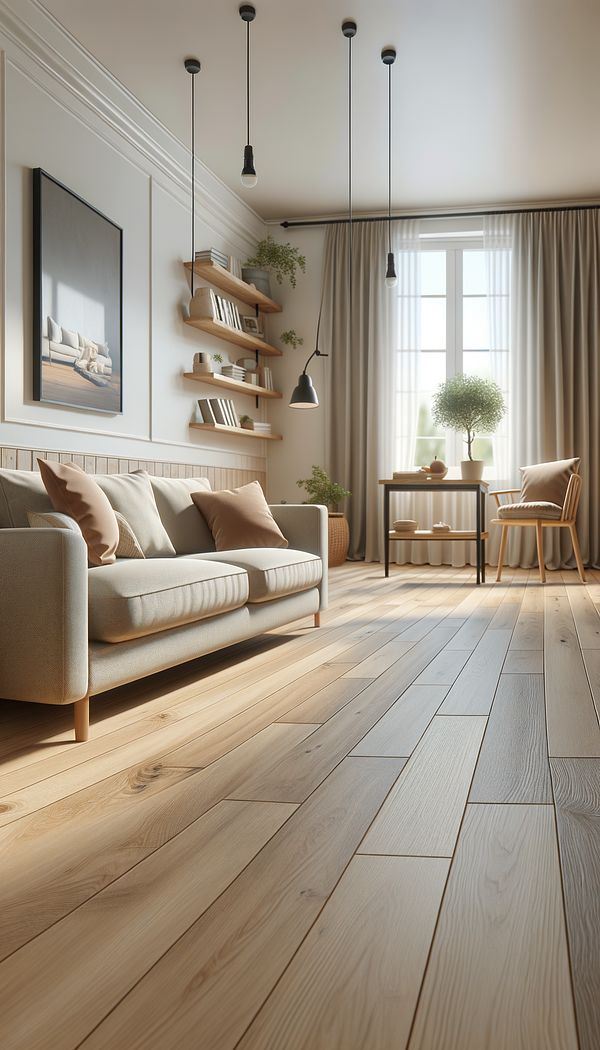What is Laminate?
Laminate is a multi-layer synthetic flooring product fused together with a lamination process.
Description
Laminate is a versatile and affordable flooring option that has become increasingly popular in modern interior design. The beauty of laminate lies in its ability to mimic the appearance of wood, stone, or tile while offering added durability and ease of maintenance. It is composed of four primary layers: a wear layer, a design layer, a core layer, and a backing layer. The wear layer provides protection against scratches, stains, and fading. The design layer boasts a high-resolution image of the desired surface, lending laminate floors their authentic appeal. The core layer, usually made of high-density fiberboard, offers stability and resistance to moisture. Lastly, the backing layer acts as a moisture barrier, further enhancing the product's durability.
Laminate flooring is engineered to be easy to install, often featuring a click-and-lock system that eliminates the need for adhesives. This makes it an attractive choice for DIY enthusiasts and professionals alike. Moreover, laminate's versatility extends beyond flooring; it is also used in furniture, countertops, and various decorative applications, proving its adaptability in different design contexts.
Usage
Laminate flooring is commonly found in residential homes, particularly in areas that require a combination of aesthetics and durability, such as living rooms, kitchens, and hallways. It's also used in commercial settings such as offices and retail spaces, where its resistance to wear and tear is especially beneficial. In furniture, laminate is often applied to tabletops, cabinets, and shelving units, offering a cost-effective and attractive finish that is easier to maintain than natural wood or stone surfaces.
FAQs
-
How does laminate compare to hardwood flooring?
Laminate flooring offers a cost-effective alternative to hardwood flooring, with the added benefits of durability, ease of installation, and lower maintenance requirements. While hardwood can provide a more authentic look and feel, high-quality laminate can closely replicate the appearance of real wood without the susceptibility to scratches and moisture.
-
Can laminate flooring be used in bathrooms?
Although laminate flooring is more resistant to moisture compared to hardwood, excessive moisture and standing water can still damage it. Therefore, it's advised to use waterproof or water-resistant laminate products specifically designed for bathrooms or to opt for more moisture-resistant flooring options.
-
Is laminate flooring environmentally friendly?
Laminate flooring can be considered environmentally friendly if it is made from sustainably sourced materials and produced using eco-friendly processes. Additionally, some laminate products are recyclable, further reducing their environmental impact.
Practical Application
Installing laminate flooring can be a rewarding DIY project due to its simplicity and the transformation it can offer to any space. To ensure a successful installation, it’s important to acclimate the laminate planks to your home's environment for at least 48 hours before installation. Additionally, using underlayment can enhance moisture resistance and reduce sound transmission, further improving the performance and longevity of your laminate flooring.
-
Barrel BackBarrel back refers to a curved, rounded backrest on a chair or sofa, resembling the shape of a half barrel.
-
LinoleumLinoleum is a durable, eco-friendly floor covering made from natural materials.
-
SateenSateen is a fabric known for its smooth, luxurious feel, often used in interior design for bedding and upholstery.
-
Arm CapsProtective coverings designed to fit over the arms of chairs and sofas.
-
LayeredLayered refers to the technique of adding multiple elements to create depth and interest in an interior design.
